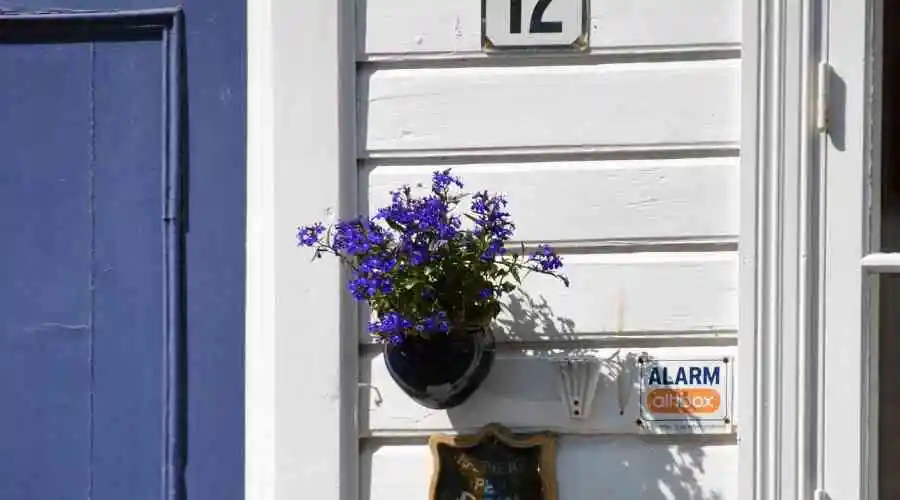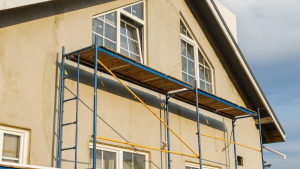R-value is a way to figure out how well insulation stops heat from moving in and out of a building. If you’re looking for new vinyl siding for your home, you may have heard of this term. It’s important to know what it means. The experienced team at CMB Wayne Stucco & EIFS can help you understand vinyl siding R-value and what to think about when choosing a new exterior for your home.
Air can’t leave or come into your home if the inside and outside are properly insulated. R-value tells how well a material stops heat from moving through it. It is based on a concept called “R-factor,” which is found by putting a material between two plates and measuring how much heat moves through it. These tests are done in a lab with a one-square-foot piece of material that is one inch thick. The temperature difference between the inside and outside of the material is one degree Fahrenheit. The rate of heat flow in BTUs per hour tells you how well the material moves heat.
R-value is found by multiplying the R-factor by the thickness of the material. For example, if a piece of insulation has an R-factor of 2 and is 1.5 inches thick, the R-value would be 3. The better material is at keeping the heat in and cold air out during the winter, and vice versa during the summer, the higher the R-value.
Inside Insulation
Most people think of rolls of fluffy fiberglass or spray foam in the walls when they think of insulation. Even though this type of insulation works well, it doesn’t stop all air leakage, which can cost you money on your heating and cooling bills. Even though your walls probably have insulation between the wooden studs, the studs themselves aren’t insulated. Studs can take up to 25% of the wall space in a house. Thermal bridging is the process by which heat moves from the warm inside of your home to the cold outside. These energy leaks could be costing you money and not keeping your home as warm as it could be.
Vinyl Siding That's Insulated
These studs and other spaces are covered by insulated vinyl siding on the outside, which helps stop thermal bridging and reduces energy loss. Depending on the brand, type, and size of siding you choose, good quality insulated vinyl siding usually has an R-value between 2.0 and 4.0.
The R-value of most vinyl siding is about 0.61. Quality vinyl siding has a higher R-value than many other building materials, even if it is not insulated. Other types of building materials have the following R-values:
Fiber cement – 0.37
Stucco – 0.40
Brick veneer –0.44
Stone veneer – 0.11
Talking to an experienced contractor about your needs and the look you want to go for can help you better understand siding R-value and figure out which material may be right for you.
Other Benefits of Vinyl Siding
Both regular vinyl siding and insulated vinyl siding have benefits, like a higher R-value that can help your home be more energy efficient.
- Low Maintenance: Vinyl siding doesn't need to be painted, caulked, or stained and is easy to clean with mild soap and a garden hose.
- Durability: High-quality vinyl siding can stand up to UV rays, strong winds, and even snowstorms. It is also resistant to bugs and water, which helps keep it from rotting.
- Versatility: Vinyl siding comes in just about every color, texture, and style you can think of, including styles that look like natural wood or stone.
- Curb Appeal: The R-value and energy efficiency of siding are important, but so is how it looks from the street. If you want your house to stand out or if you're going to sell it, installing vinyl siding can make it look better from the street and raise the value of your home.
Contact Us for More Info & Professional Help
CMB Wayne Stucco & EIFS has been serving customers in Central and Northern New Jersey for more than 65 years with high-quality work, materials, and customer service. Contact us online or call (973) 314-2808 to schedule a free estimate and learn more about vinyl siding and the other services we offer. We have flexible financing options for home improvements that can fit your needs and your budget.


